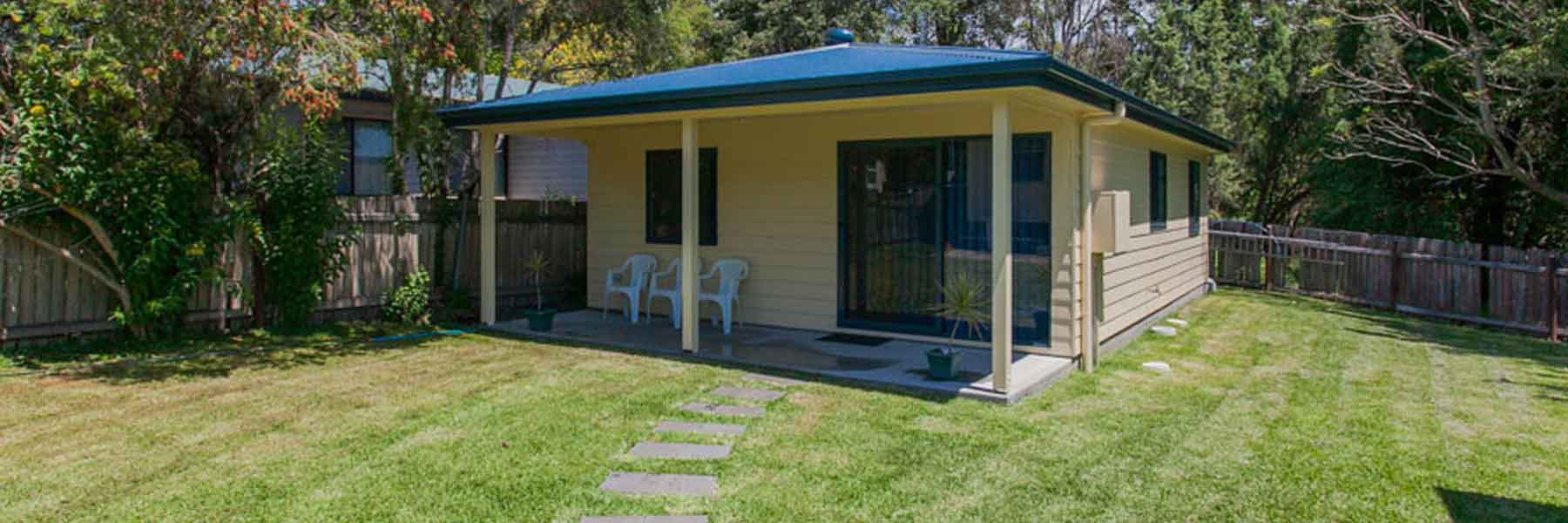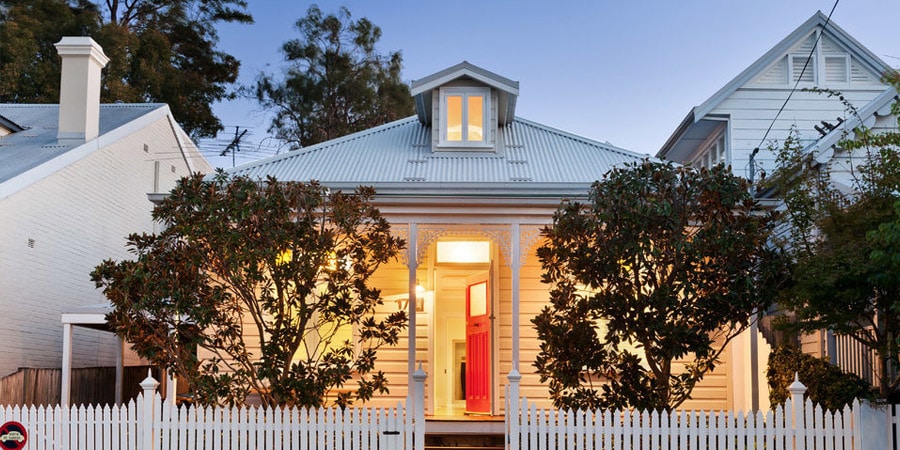Home > Home Loans > Bridging Loans
Bridging Loans
Moving house and transitioning between mortgages can be daunting. Bridging loans help make the transition as seamless as possible.
Author
Savvy Editorial TeamFact checked
If you are selling your old home and buying a new one, you might find yourself trying to sync up the two transactions. After all, not many of us can afford the repayments on two mortgages at the same time. If your old home sells quickly, before you find a new place, then you might need to rent for a while. Or you may find your dream home but be unable to afford it until the old house sells. Either way, the process can be inconvenient and stressful.
A bridging loan can help you navigate this transition smoothly and easily. It effectively connects your two loans and reduces your repayments temporarily so that they are more affordable.
How do bridging loans work?
Bridging loans can be a little confusing because each lender defines them a little differently. Some will call the mortgage on your old house a bridging loan, while others use this term to refer to the mortgage on your new house.
Either way, the bottom line is that you will have two mortgages for a short period of time – usually between 6 and 12 months – with reduced repayments. The total amount you owe on the two loans combined is referred to as the ‘peak debt.’
For example, say your old home is worth $500k, and you have $150K left on the mortgage. The new home you want to buy costs $600k. This means your total debt, or peak debt, is $150k + $600k = $750k.
Once you’ve sold your old house and paid off as much of your peak debt as possible, your bridging loan will end. Any debt that you have left will be combined into one regular home loan going forward. This is referred to as the ‘ongoing balance’ or ‘end debt’.
For example, if you sell your old home for $500k, you can reduce your debt from $750k down to $250k. Your lender will then treat the $250k end debt as a regular home loan.
If your old home sells for less, for example, if it sells for $400k, you’ll be left with and end debt of $350k.
It’s important to note that the end debt is converted to a completely different loan product, which means it could have different terms and interest rates to the bridging loan. These details should be set out as part of your bridging contract, so make sure you read them carefully to avoid any nasty surprises.
What are the repayments on a bridging loan?
During the bridging period, your repayments are reduced or suspended so that they are easier to manage. Your lender may apply these changes for one or both of your home loans.
If you have reduced payments, you will only pay the interest on your loan until the sale of your old home. After the bridging loan is over, you’ll go back to paying principal and interest on the end debt.
If your payments are suspended, you won’t have to make any repayments while the bridging loan is in effect, but the lender will keep charging you interest and adding it to the total debt you owe. At the end of the bridging loan, your end debt will be higher, because it will include all the interest you owe. Since interest is compounded daily, you’ll be charged interest on your interest, which can add up pretty quickly.
How much can I borrow on a bridging loan?
As with all home loans, the amount you can borrow will depend on your financial situation, income, and credit rating. It’s also impacted by the assets you own, the value of your old and new properties, and the equity you have in your old house.
When it comes to valuing properties for home loans, lenders use an appraisal method that is not the same as the market value, so don’t be surprised if the numbers are not what you expected. An independent contractor will conduct the two valuations, and you’ll need to pay their services fees.
Many lenders will then discount the value of your old house by 15% when calculating how much they can lend you for a bridging loan. This is a buffer in case the house is sold for less than its estimated value.
Do I need a deposit for a bridging loan?
Generally speaking, you need to be able to cover 20% of your peak debt. This can be in cash, or in equity.
Looking at the previous example again, if your home is worth $500k and you still owe $150k on the mortgage that means your equity is $350k. This is the portion of the home that you have paid off and which belongs to you.
If you use your $350k equity as a deposit on your $750k peak debt, this means you have a deposit of approximately 47%.
Not many lenders will allow you to take on a bridging loan with a deposit under 20%. Those that do will insist that you pay for lender’s mortgage insurance.
Your home loan options
Making your first big step towards buying a home? It's crucial to be across your mortgage options as a first homebuyer.
Opting for a variable interest rate on your home loan means it'll fluctuate as the market moves throughout your repayment term.
On the other hand, fixing your rate locks it in for a pre-defined period. This can bring with it greater certainty around your budget.
It's important not to set and forget when it comes to your home loan. If you find a more competitive offer, it may be worth refinancing.
If you're looking to build a new house, construction loans are specifically designed to cater to the different needs associated with doing so.
A guarantor essentially acts as a safety net for your lender, as they sign onto your loan to agree to pay it off should you become unable to do so.
Purchasing a property as an investment brings with it different specifications from a lender. It's crucial to know what your options are.
Businesses big or small may wish to purchase a property for commercial purposes, which are also different from a standard loan.
Your home loan may give you an interest-only option, which allows you to exclusively pay interest on your loan for a set period.
Just because your finances may be slightly more complicated as a self-employed individual doesn't mean you can't take out a home loan.
Some lenders may allow you to apply for a home loan with alternative documents, such as tax returns, BAS and ABN registration.
There are several options for purchasing a property without a cash deposit, such as equity in another property if you or your guarantor own one.
Why compare home loans with Savvy?
100% free
You don't have to pay a cent to compare home loans with us, enabling you to do so at any time.
Paperless quote process
You can fill out a simple online quote via our form without having to worry about sorting through heaps of paperwork.
Trusted lenders
With a panel of reputable mortgage lenders behind us, you can rest assured you'll be comparing high-quality options.
Got a question about bridging loans?
Yes. If you are thinking of using a bridging loan, you’ll need to finance both your old and new property through the same lender, because the two loans will be connected. This doesn’t mean that you have to use your existing lender. You could refinance with someone else and have both loans through them, though there may be fees involved with switching lenders.
Once your bridging loan expires, your lender can reinstate your regular repayments. This means that you will be juggling the repayments on two home loans, which can really break the bank. Some lenders will even charge you a higher interest rate as a penalty.
Other lenders take a more hands-on approach and will take over the sale of your old property. Because they are looking to recoup their money quickly, they may choose to sell the house for less than its market value. This means you have less money to pay off your peak debt, and you are left with a higher end debt that still needs to be paid.
Bridging loans are mainly used for existing houses, and most lenders won’t issue a bridging loan for the construction of a new house. If you’re aiming to build, you may need to use a different financial product such as a construction loan.
What are the pros and cons of a bridging loan?
PROS
Avoid moving twice
Avoid the inconvenience of renting and moving twice, as well as the associated costs.
Manageable repayments
By reducing the repayments on one or both of your home loans, bridging loans can help you transition between two loans without breaking the bank.
Flexible timing
Don’t miss out on buying your dream home if your old house hasn’t sold yet.
Get the best price
Take the time to get a good price on your old home without having to rush.
Flexible repayments
If you can afford to make extra repayments, there are no penalties for paying off your bridging loan early.
CONS
Administrations costs
You’ll need to pay for two property valuations.
Fewer features
There are usually no redraw facilities during the bridging period.
Interest costs
If you suspend repayments, the interest will keep compounding.
Fixed term
If you don’t sell your old property during the bridging period, you could be subject to
- A higher interest rate,
- Repayments on two mortgages, or
- The forced sale of your home for lower than market value, leaving you with more debt.










